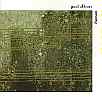Open any pro audio magazine and you're likely to read about the difference between analog and digital mastering. In my own work, I hear various comments on the topic. Some clients ask if I can apply analog processing. Others are very concerned that the entire signal chain remain digital. What are these people looking for, and why do they think it can only be delivered in a specific platform?
As with many discussions, a lot of the opinions are fueled by misinformation. Claims of digital being "cold" or "sterile" are just as unfounded as analog being inherently "warm" or "life-like." To be sure, each platform has its unique capabilities and characteristics, but they're not what most people believe them to be. Let's take a closer look.
Analog has -- and always will have -- better resolution than digital, but it comes with the side-effect of sound coloration. When an audio signal is passed through physical elements such as tubes, capacitors and the like, they will impact the audio signal in some way. Even if a piece of equipment is on bypass, the act of routing a signal through it affects the sound. This can be a benefit or a detriment, depending on preference. Many people want what they call a "fat, warm sound." This is certainly an attribute that analog equipment can impart, but there are two other factors even more important in achieving this sound: the skill of the mastering engineer and how the music was recorded, as he/she can only work with what an artist delivers. If the original recording sounds like The Back Street Boys, analog mastering cannot give it the sonic characteristics of early Steely Dan. Likewise, if a mastering engineer over-processes, even the best analog gear can sound harsh or muddy. Simply having a piece of analog gear in a signal chain is no guarantee of "analog" sound.
Digital -- with its ability to apply (and undo) unique changes to a virtually unlimited number of scenarios -- has greater control than analog, but it comes with the side-effect of lower resolution. However, keep in mind that "lower resolution" is a relative term. The 24/96 platform that many hi-fi enthusiasts proclaimed to be "as good as analog" has already been eclipsed by much better resolution rates. What we're talking about is theoretical resolution. Much of what is criticized as missing in digital falls into the "unheard, but felt" category: overtones and undertones that are beyond the scope of current sampling standards. In theory, digital will never have the resolution of analog. At a certain point, though, it becomes unnoticeable to the human ear.
So where does all this leave us? It depends on the application. In mastering, the ultimate goal is to apply changes to music that maximize its sound -- punchier drums, clearer bass, or whatever is desired -- without imparting any coloration from the process itself, while at the same time maintaining the highest resolution. In short, the perfect solution would probably contain the best elements of both analog and digital. Keep in mind, though, that either platform is just a means to accomplish work...not the work itself.
Paul Abbott has been playing and amplifying acoustic guitars since 1988. He has recorded several CDs (both solo and with bands), composes and performs his own works for solo acoustic guitar, and experiments in computer composition.
